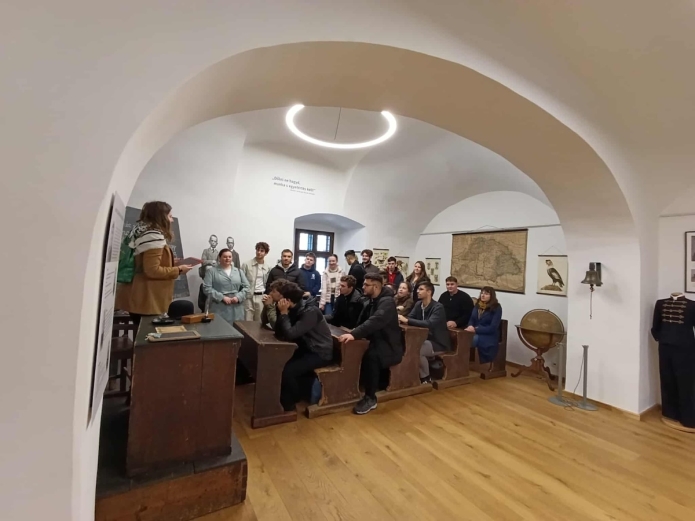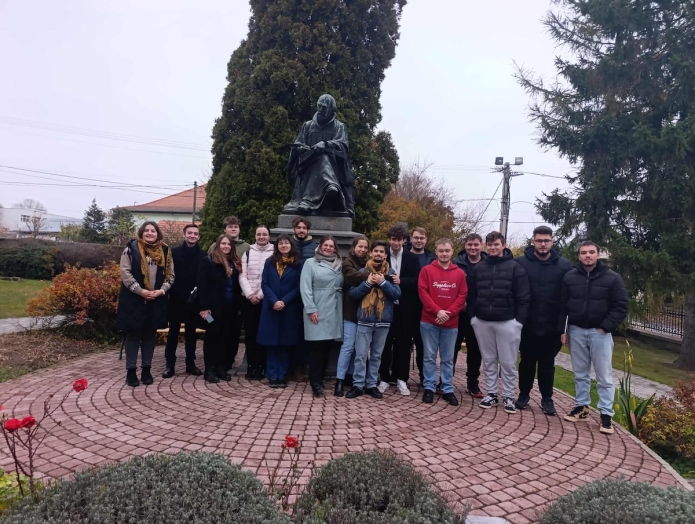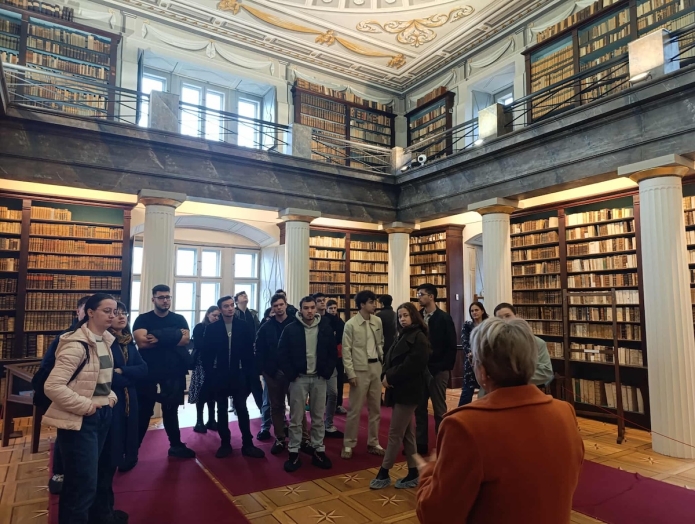The second-year students of KPTI took part in a study trip in Sárospatak from November 10–14, 2025. The diverse programs strengthened our spirit, enriched our cultural horizons, expanded our theological knowledge, and fostered openness toward one another.
Erasmus Short term study mobility to Sárospatak and its surroundings



As the class representative, I experienced firsthand that the varied programs fortified our souls, broadened our cultural perspectives, deepened our theological insights, and made us more open to each other. During our excursions, we explored historically significant locations and also walked spiritual paths where our desires were blessed with patience, our encounters with acceptance, our strength with humility, and our hearts with forgiveness. This week also laid the foundation for our future. I hope there was a part of this week that brought us closer to our calling, so that with commitment and passion, permeating our surroundings, we seek what the Lord has called us to and understand His intention for us, His occasionally weary servants.
We extend our gratitude to the host university, which received us with great esteem and a loving atmosphere, creating a true home for these days. Below, Zsuzsanna Kiss, the class spokesperson, offers an overview of the experiences and takeaways.
Monday
We had enriching days in Sárospatak. We set off at 9 a.m. from the Theology courtyard. The journey was joyful, and thanks to God, we arrived safely and settled into Kazinczy Ferenc College. At 6 p.m., we took part in a devotion led by Professor Éva Éles, based on Acts 14:21–28. Then, coordinated by Hajnalka Bors, the class introduced themselves, and we presented the programs and leisure activities available at KPTI. As a novelty for our Sárospatak hosts, Hunor Antal introduced the life of Lutheran theology students, and Bence Birtalan that of Unitarian colleagues. Our classmates showcased various activities: Hajnalka Bors spoke generally about student life in Cluj and our theology lifestyle and holiday-related events; Eszter Faluvégi introduced folk dance; Kinga Szabó detailed missions at the Institute; Nimród Jakab presented musical activities; and Dávid Gáll explained sports opportunities. We even sang a few songs together with our hosts, in community, to the glory of God. Later, the class spent a meaningful evening together with games and deep conversations.
Tuesday
After morning prayer, we visited the Great Library, which offers not only a vast cultural heritage of Sárospatak but also a beautiful sight. The reading room—hosting rare items—now serves as an exhibition space; everyday books can be borrowed in other sections. We also visited the University's museum; through a museum pedagogy session, we learned about the institution's history, period learning conditions, the lives of György Rákóczi I and Zsuzsanna Lorántffy, and Comenius’s innovative teaching methods. Afterwards, we attended an Old Testament class with Patak students, focusing on the Book of Joshua. The content wasn’t much new compared to what we’ve studied at home, but we noticed stylistic differences in presentation. After lunch, we visited the castle where, with professional guidance, we toured every chamber of the Red Tower and enjoyed time together at the top despite the mist—we took group photos. In the evening, we participated in the “Uzsikedd” initiative by Patak theology students for the second time, where teachers and students gathered informally with snacks, conversation, and music.
Wednesday
After the devotion, and with a snack in hand, we attended an Iconography class, where the relationship between lifestyle and religious beliefs was the theme. Then we joined a Missiology class that the professor specifically held for us—explored in a direct, humorous way: what missiology truly is. In the afternoon, a group went to Tállya to visit the Hollóházi Mihály winery. We learned the wine region’s history, got insight into wine production, and even tasted them. At the end of the day, Professor Éva Éles gave a lecture titled “Mysterious Encounters” for the College Evenings series; then, the class had dinner together at the Bor és Bazsalikom restaurant.
Thursday
After morning prayer, we took a minibus to the Zemplén Adventure Park, where we went on a chairlift, rode bobsled, and tried the rope sliding course. Afterwards, we visited the Károlyi Museum at Gönc, where we saw numerous Bible translations and an interactive exhibit. A strong local tradition holds that Molnár Albert served as a Gönc student in 1587–1588, often helping with logistics for the manuscripts between Gönc and Vizsoly—witnessing the historic atmosphere and spirit. In the Reformed church, we even sang a psalm. We also visited Vizsoly, met the local pastor, toured the church, and saw an exhibition on the history of Hungarian printing. We could try an old printing press by making the first page of the Vizsoly Bible, which we had already seen both in Gönc and the church. Feeling it was time to return to Sárospatak, we ended the day and our trip by watching the Hungarian–Armenian match together, followed by dinner. On Friday morning, we departed for home and arrived back in Cluj in the afternoon. These few days remain unforgettable for our class, gifting us with many memories, experiences, and lessons.
Zsuzsanna Kiss
second-year